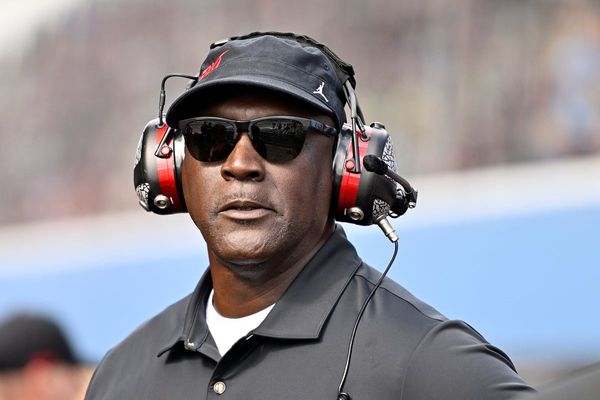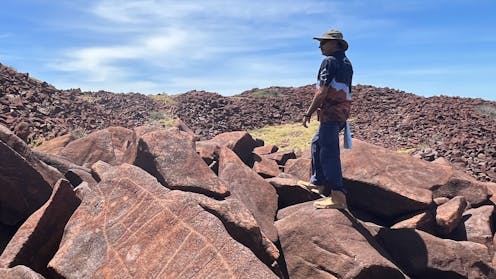
On Friday, the Murujuga Cultural Landscape in northwest Western Australia was inscribed on the UNESCO World Heritage List. We were in Paris to see Murujuga become Australia’s 21st world heritage property, but only our second property listed exclusively for its Indigenous cultural values.
Murujuga, meaning “hip bone sticking out”, is an ancient rocky landscape rising out of the Indian Ocean in northwest Australia.
Murujuga is shaped by the Lore and the presence of Ngarda-Ngarli – the collective term for the Traditional Owner groups of the coastal Pilbara – since Ngurra Nyujunggamu, when the earth was soft, the beginning of time.
Murujuga includes the Burrup Peninsula, the Dampier Archipelago’s 42 islands and the listed property covers almost 100,000 hectares of land and sea country. Across this cultural landscape are between one to two million petroglyphs – rock art – created by carving designs into rock surfaces. The petroglyphs record Ngarda Ngarli’s attachment and adaptation to a changing environment through deep time.
The UNESCO listing recognises the “outstanding universal value” of the Murujuga Cultural Landscape. This value lies in the traditional system governing it, in tangible and intangible attributes that attest to 50,000 years of Ngarda-Ngarli using and caring for the land and seascape.
The Ngarda-Ngarli have campaigned for World Heritage Listing of the Murujuga Cultural Landscape for more than 20 years.
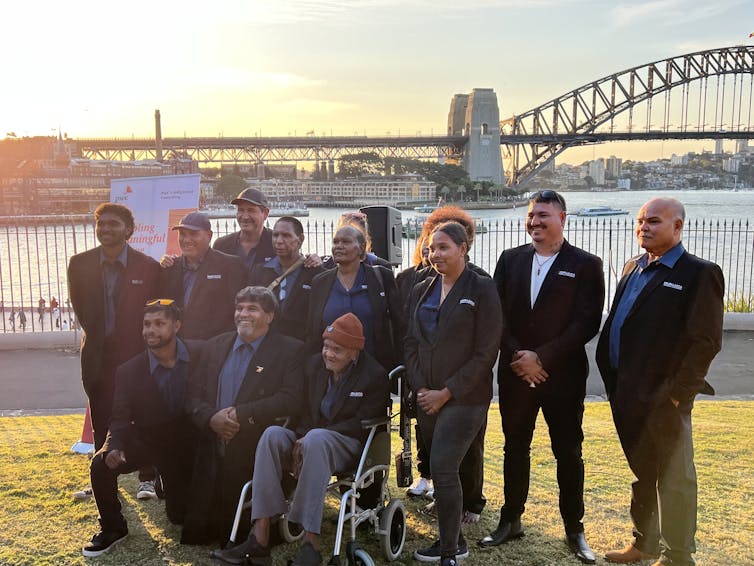
A controversial nomination
While the outstanding universal values of this place were not in question, the nomination became mired with broader climate concerns.
Industrial development began at Murujuga in the 1950s and was established before Traditional Owners had decision-making authority. The Dampier Archipelago, as well as housing petroglyphs across 42 islands, is also home to one of the largest industrial hubs in the southern hemisphere.
The recent approval for the North-West Gas Hub has elevated climate change concerns and raised questions about whether the government is serious about protecting Murujuga.
The Murujuga Rock Art Monitoring Program (MRAMP) year two report was released around the same time as the north west gas hub announcement.
While acidic pollution has been suggested by some, our work on the monitoring program found rain and dust at the site was pH neutral, and there is no acid rain impacting on the petroglyphs.
Other criticism included that the air quality at the site is compromised by local gas production. The research found the air quality at Murujuga is “good” to “very good” by international standards. We also found average annual nitrogen dioxide levels − the emission under most scrutiny − is five times lower than World Health Organisation guidelines.
According to MRAMP research, Murujuga’s air quality is well within national standards. Nitrogen dioxide is 16 times lower than the national standard, and sulphur dioxide never exceeding 10% of the national standard.
Importantly, the research program is ongoing and will transition to monitoring led by the Ngarda-Ngarli with support and training from the scientists. And this ongoing monitoring will be part of the management regime in place to protect Murujuga as a world heritage listed site.
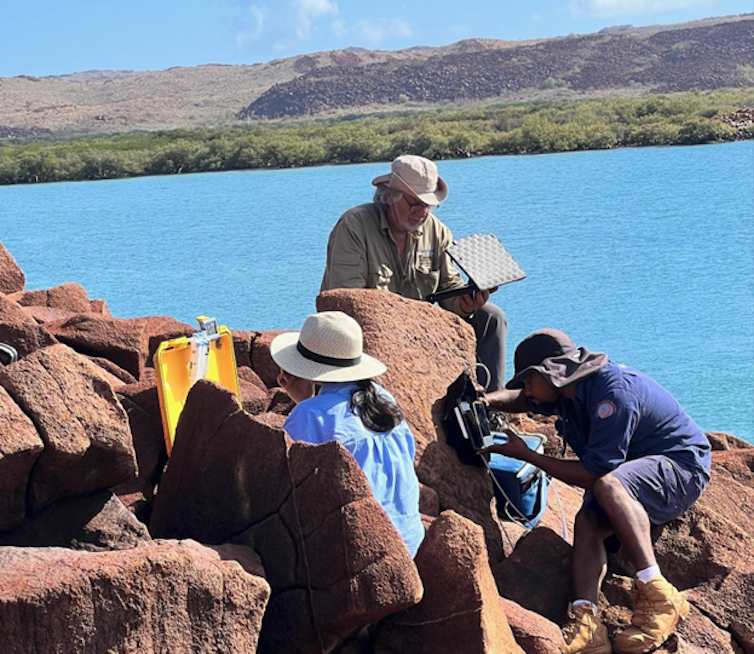
Ngard-Ngarli leadership
Traditional Owners and Custodians led the world heritage nomination, supported by State and Commonwealth governments.
Traditional Owners consider the listing will better protect Ngarda-Ngarli knowledge, lore and culture as expressed through the landscape and in the petroglyphs.
World heritage recognition will support Ngarda-Ngarli decision-making and ongoing management across the Murujuga Cultural Landscape.
This global recognition is a mechanism to help Ngarda-Ngarli do what they have always done: protect their culture and decide what is right for Country for future generations.
The inscription is a testament to the old people who started this quest decades ago, many of whom have not lived to celebrate this victory.
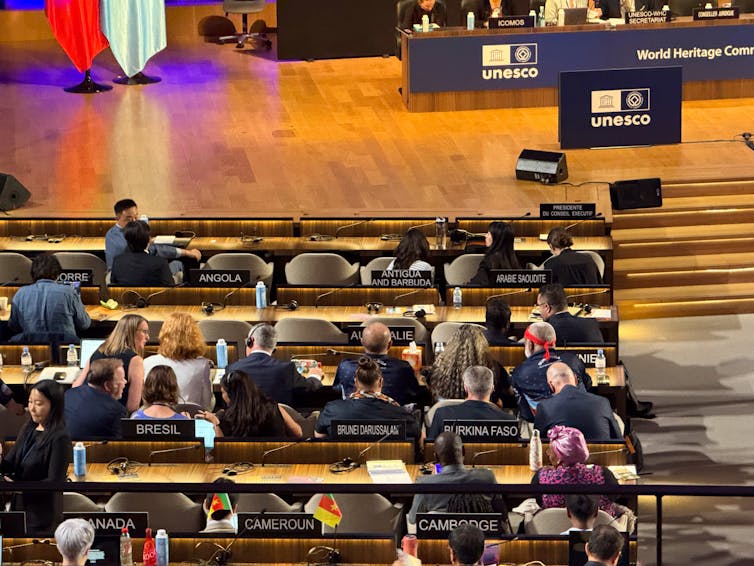
Australia’s deep time heritage
Australia now has two places on the World Heritage List which are exclusively listed as Indigenous sites of outstanding universal value to all humanity.
The Murujuga Cultural Landscape joins on the list the southwestern Victorian site Budj Bim, one of the world’s most extensive and oldest aquaculture systems.
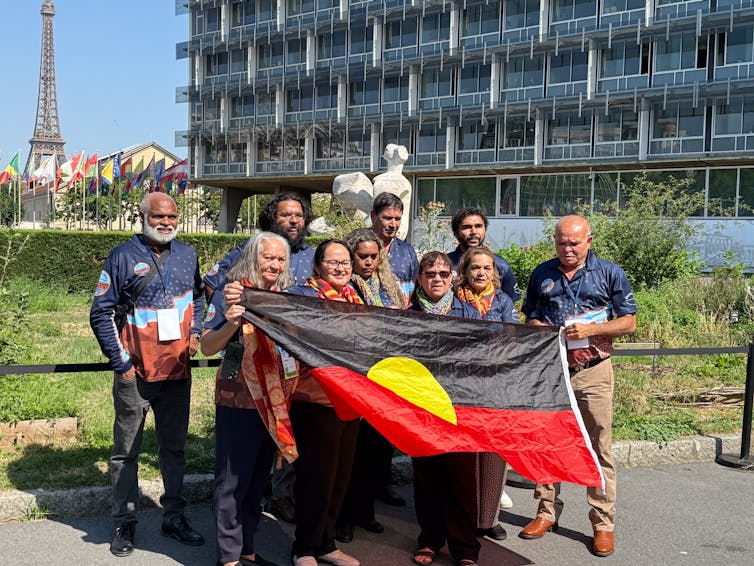
By this listing, the world has recognised the deep time creative genius and ongoing connection of Ngarda-Ngarli to the Murujuga Cultural Landscape.
This international acclaim recognises the extraordinary resilience of Australia’s First Nations peoples and should be a source of pride and celebration for all Australians.
Jo McDonald is an employee of the University of Western Australia and receives funding from the Australian Research Council.The Centre for Rock Art Research and Management receives funding for its research and training operations from Rio Tinto. Jo was a member of the World Heritage committee and contributed to the writing of the dossier.
Amy Stevens is an employee of Murujuga Aboriginal Corporation, which receives funding from the Australian Government, the WA Government and industry and was a lead author on the Murujuga Cultural Landscape World Heritage nomination.
Belinda Churnside serves as Deputy Chair. Board Directors are remunerated for their duties in accordance with community-approved sitting fees. These payments are made from MAC’s operational income. MAC receives funding support for a range of projects from both State and Federal government departments, as well as from industry partners operating within the Burrup and Maitland Industrial Estate Agreement (BMIEA) area. The Department of Water and Environmental Regulation provides operational and strategic support for the Murujuga Rock Art Monitoring Program. The Department of Biodiversity, Conservation and Attractions funds MAC’s National Park Ranger Team, while other funding bodies contribute to the Murujuga Land and Sea Unit Rangers. All funding sources and expenditures are transparently reported in MAC’s annual financial report, which is audited each year by an independent external auditor.
Ben Mullins is the lead scientist on the Murujuga Rock Art Monitoring Project, which is funded by the Government of Western Australia.
Peter Hicks is the Chair of the Board of Murujuga Aboriginal Corporation (MAC). Board Directors are remunerated for their duties in accordance with community-approved sitting fees. These payments are made from MAC’s operational income. MAC receives funding support for a range of projects from both State and Federal government departments, as well as from industry partners operating within the Burrup and Maitland Industrial Estate Agreement (BMIEA) area. The Department of Water and Environmental Regulation provides operational and strategic support for the Murujuga Rock Art Monitoring Program. The Department of Biodiversity, Conservation and Attractions funds MAC’s National Park Ranger Team, while other funding bodies contribute to the Murujuga Land and Sea Unit Rangers. All funding sources and expenditures are transparently reported in MAC’s annual financial report, which is audited each year by an independent external auditor.
Terry Bailey is a World Heritage advisor to Murujuga Aboriginal Corporation and WA Government and was lead editor and co-author of Murujuga Cultural Landscape World Heritage nomination. His appointment is funded by the WA Government.
This article was originally published on The Conversation. Read the original article.




